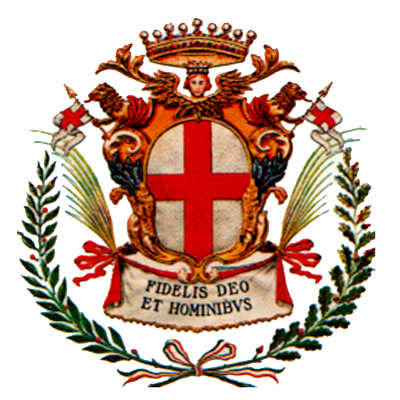PALAZZO MURATORI CRAVETTA
The Palazzo Muratori Cravetta is situated in the "Contrada Jerusalem", once known as the "Contrada dipinta" - the "Painted District" - because of its numerous frescoed façades, which served as a backdrop for the processions between the collegiate church of Sant'Andrea and the church of San Domenico.
The palazzo we see today was created by uniting three noble properties: those of the Corvo, Tapparelli and Muratori families. Illustrious figures stayed here, such as the French king Francis I (1515) and Emperor Charles V (1536). The transformation of the building was undertaken by Giovanni Francesco I Cravetta, the first President of the Ducal Senate, and was completed by his grandson, Giovanni Francesco II.
The immensely impressive courtyard of honour is an outstanding example of the Late Renaissance architecture of the Piedmont area. Painting, sculpture and architecture converge harmoniously here to create a space with a classical aura, thanks to the brilliance and skill of Ercole Negri of Sanfront, and it is enriched by the frescoes of Francesco and Costanzo Arbaudi (c.1624), the stuccoes of Bartolomeo Rusca (known for his work at the Carthusian monastery of Pesio) and the twelve busts in niches portraying Savoy princes and princesses.
The construction work seems to have finished around 1620, the year in which Victor Amadeus I chose the palace as his residence. The decorative work was done between 1606 and 1624. The Mannerist façade on Via Jerusalem presented the cycle of months alternated with busts and painted statues. A small Italian garden completed the structure, providing the ideal place for receptions and also used as a private theatre, taking advantage of the splendid backdrop of the main façade with the pattern of triumphal arches graced by the Attic storey painted with figures.
In 1630 Duke Charles Emmanuel I died in a room on the ground floor, with his subject and confidant Alessandro III Cravetta at his side. This room, which is still open to visitors, is particularly surprising because of the superb coffered ceiling, decorated with approximately 160 wooden elements painted with the coats of arms of noble families and figures, animals and scenes of everyday life, rendered in a late medieval style (the 1470s).
In 2006, as part of the "Jardins des Alpes" Interreg Alcotra project, the historical garden was renovated based on plans inspired by the Renaissance-Mannerist period. Experts such as Claude Mollet and his son André were chosen as theoretical models and the engraved plates in the Théâtre des plans et jardinages (1652) were examined; the project was based on the rectangular plan of number 16. Box (Buxus sempervirens) was used for the parterre, with lavender cotton (Santolina chamaecyparissus) set in the middle.
The garden is bounded along the edges by
rectangular lawns. The walls along the Contrada delle Beccherie and
on the east side are composed of hornbeam (Carpinus betulus)
palisades in order to conceal the less noteworthy fronts with
respect to the main façades.
Architectural restoration and conservation of the building
commenced in 2010.

